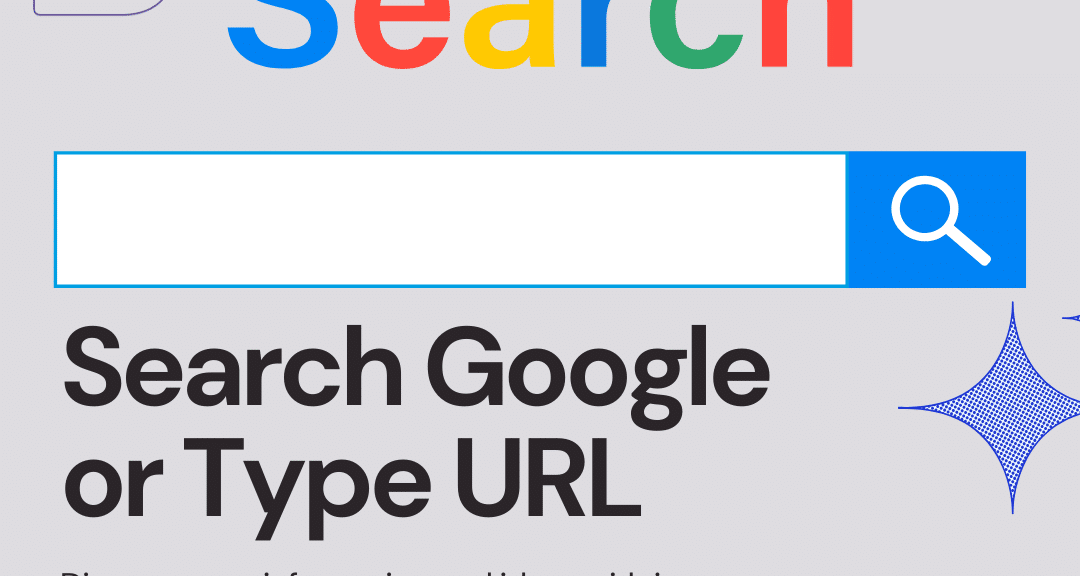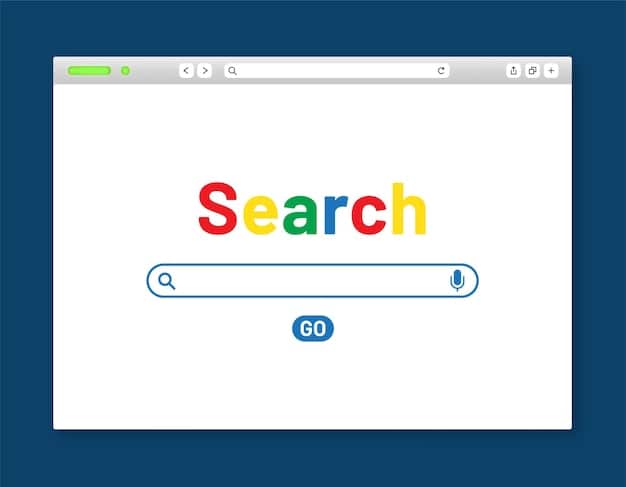
Every internet user, in this digital age, has had some encounter with the words Search Google or Type a URL on the browser interface. What does it denote, and which one’s better? The clear-cut distinction and option between performing a search on Google or typing in a URL can change your whole experience while browsing a website in terms of traffic and even SEO.
Understanding Search Google or Type A URL
Launching a new page tab on the Google Chrome browser or any other kind of web browser generally gets you two major options on the address bar. Either you can just type in a specific URL to access a particular site or perhaps you can enter some keywords to conduct a c. The first option leads you right through the door of a well-known website, while the latter option opens doors with various results related to your inquiry.
This duality makes doing things more convenient because it enables an individual to solicit information or get to a site of his choice very quickly. Most modern browsers, to include Chrome, Edge, and even Firefox, boast this feature to enhance the experience of the users.
- Search Google – Aside from helping with the search, this input involves inputting a query about a phrase or a keyword Google can process to return relevant search results.
- Type a URL – That is typing in a site address (e.g., www.digitaldervish.com) to visit that specific page without receiving search results.
By differentiating between the two, you can improve your own browsing efficiency and gain an understanding of how search engines behave.
Types of URLs and How They Work
An Internet resource has a Uniform Resource Locator address that is also referred to as URL. Depending upon various aspects of their usage and structure, different classifications of URLs are available.
Types of URLs:
- Absolute URL:
- A complete URL would contain the protocol, the domain, and the specific resource location. (e.g., https://www.example.com/page.html).
- The question may be simplified to an insinuation of the appropriate direction in order to overcome a problem.
- Relative URL:
- A partial URL that depends on the current domain or directory (e.g., /images/logo.png).
- Commonly used within websites to link pages and resources efficiently.
- Static URL:
- A fixed web address that does not change (e.g., https://www.example.com/about-us).
- Preferred for SEO as it is easy to read and remember.
- Dynamic URL:
- A URL that changes based on user input or database queries (e.g., https://www.example.com/product?id=123).
- Used in e-commerce and dynamic content websites.
- Deep URL:
- A hyperlink containing a URL that provides easy access to some site page or specific online resources. (e.g., https://www.example.com/blog/article-1).
- Used for bookmarking and sharing specific content.
- Data URL:
- A URL that embeds small data, such as images, directly into HTML or CSS (e.g., data:image/png;base64,…).
- Helps reduce HTTP requests and improve loading speed.
How URLs Work:
A browser converts a URL following steps:
- DNS Resolution: The domain name is then translated into an Internet Protocol (IP) address through the working of a Domain Name System (DNS).
- Request to Server: The browser forwards the request to the web server hosting the resource.
- Server Response: The server processes the request and sends the requested file or webpage.
- Rendering: The browser interprets and displays the content for the user.
How to Apply URLs in Websites:
- Use absolute URLs for external links and relative URLs for internal navigation.
- Optimize static URLs for better SEO ranking.
- Ensure dynamic URLs are clean and user-friendly.
- Use deep URLs for easy content sharing.
- Embed data URLs where necessary to reduce external requests.
Align your companies under key points of thought to achieve a shared understanding of websites and the best practices available.
When Should You “Search Google”?
Using Google Search is beneficial when:
- You don’t know the exact website URL.
- You want to find multiple sources of information.
- You’re searching for answers, products, or services.
- You need to check SEO rankings or trends.

For example, if you are looking for solutions to errors like “what is a 304 error” or “error 406”, Google will provide multiple troubleshooting solutions for you.
When Should You “Type a URL”?
Typing a URL directly is useful when:
- You know the exact web address of a site.
- You want to avoid search results and ads.
- You are logging into secure websites like banking portals.
- You wish to visit specific pages faster.
For instance, if you want to check the latest digital marketing trends on Digi Dervish, typing www.digidervish.com directly saves time and ensures accuracy.
The SEO Impact of “Search Google or Type A URL”
1. Organic Traffic vs. Direct Traffic
It is the organic traffic that an individual receives through a Google search. This is in contrast to taking the URL directly, which is known as direct traffic and is usually a good indicator of strong branding.
2. SEO Rankings and Visibility
People searching through Google are interacting with SEO-driven content that boosts the ranking of websites. Hence, targeting keywords such as “413 error” or “406 error” in blogs would help them rank better.
3. User Behavior and Bounce Rate
Typing a URL directly often results in lower bounce rates because users visit a specific page with intent. Meanwhile, search traffic might include users browsing multiple results before clicking on a website.
Common Browser Errors and How They Relate
Browsing on The Internet is frequently interrupted by bothersome errors. Here are some commonly occurring errors:
What is a 304 Error?
In other words, when there is a request for a page on the browser side and the page has not changed since last visited, the server responds 304, allowing the browser to take a page from its own cache rather than requesting it from the server.This helps speed up browsing.
Error 406 – What Does It Mean?
The server could not send a reply in a browser-acceptable format. Such a response results in a state of 406. Most of the time, it occurs because of the incorrect headers or security settings.
Understanding 413 Error
An entry 413 error translates-more or less-to say that the request entity is too large for the server to process. It frequently happens when large files are uploaded to a website.
Conclusion
Summarily Search Google or Type a URL depends on the user’s need. For detailed information with numerous sources, Google should be searched. Moreover, if someone is aware of a site’s address, typing a URL becomes faster and more effective. It is also relevant for the users to be aware of some of the common web errors, like what is a 304 error, error 406, and 413 error, when trying to solve any browsing problems.
Optimizing your browsing style and basic SEO may give you a better experience online and visibility for your website. To explore more about digital marketing and web development, visit Digi Dervish now!
FAQs
Should we search Google or type a URL?
Use Google search for general information; type a URL for direct access to a website.
How to search or type a URL?
Enter keywords in the search bar first. Enlist the full URL in the address bar to visit a specific website.
What is the URL of a Google search?
A Google search URL starts with https://www.google.com/search?q=, followed by the search query.
How can I search for a URL?
Simply input the name of the site into Google or paste the URL straight into the search bar to retrieve related information.



